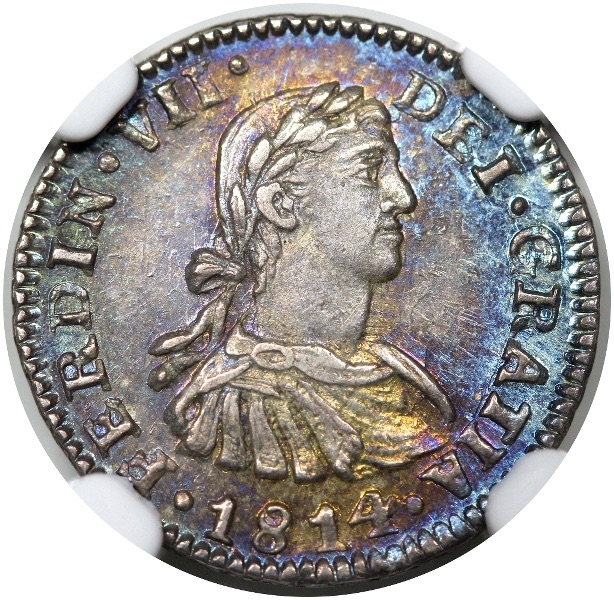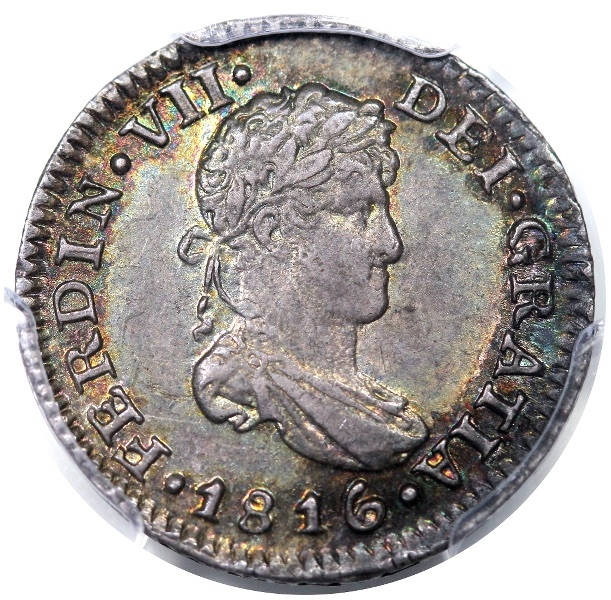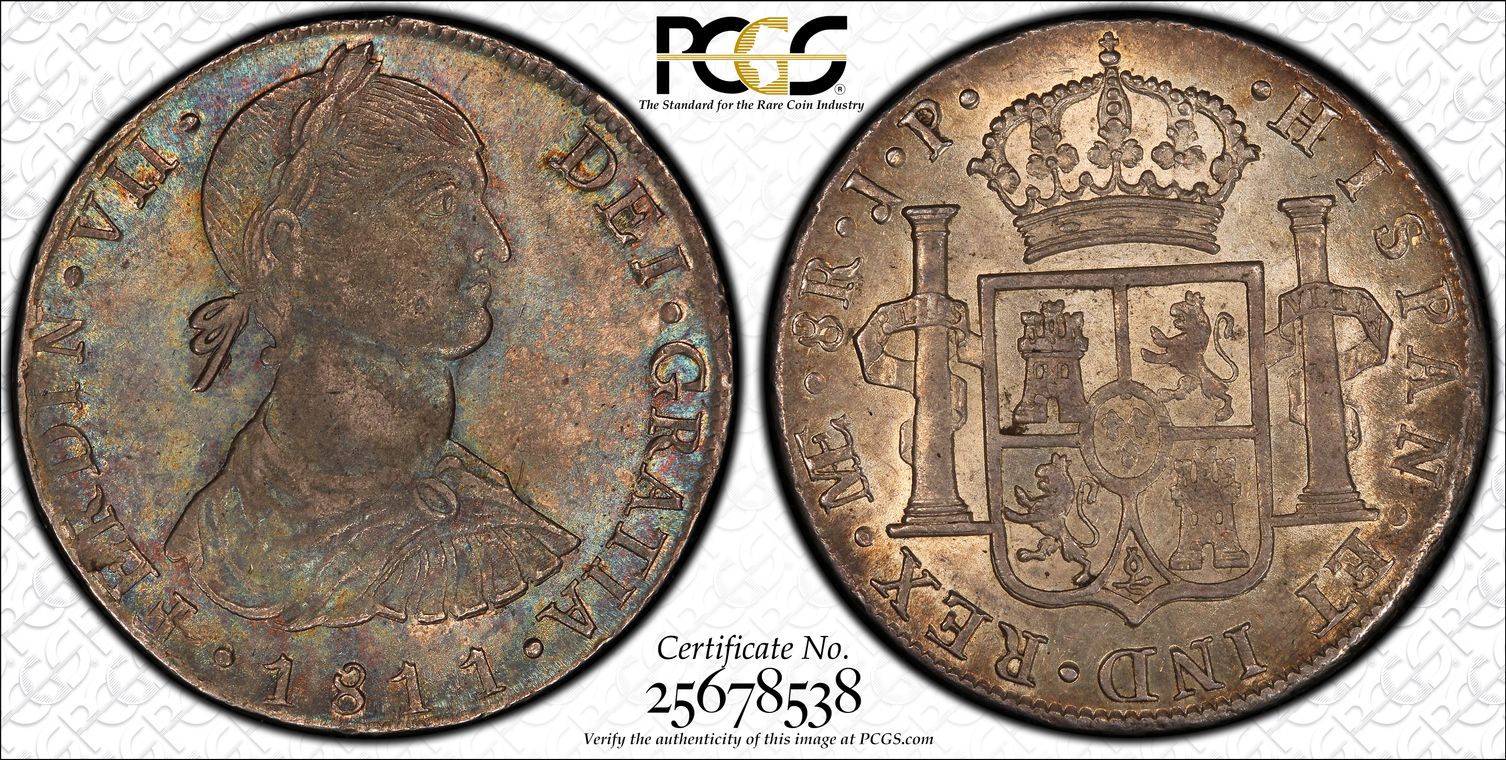Options
Spanish Monarch questions
 1Bustcollector
Posts: 577 ✭✭✭
1Bustcollector
Posts: 577 ✭✭✭
Concerning colonial Portrait Mexico City 1/2 Reales:
For the years 1808-1814 King Ferdinand VII is depicted with an "armored bust"
For the years 1815-1821 King Ferdinand VII is depicted with a "draped bust".
Question 1: Are one of these the so-called "imaginary bust"???


Persuing choice countermarked coinage on 2 reales.
Enjoyed numismatic conversations with Eric P. Newman, Dave Akers, Jules Reiver, David Davis, Russ Logan, John McCloskey, Kirk Gorman, W. David Perkins...
Enjoyed numismatic conversations with Eric P. Newman, Dave Akers, Jules Reiver, David Davis, Russ Logan, John McCloskey, Kirk Gorman, W. David Perkins...
0
Comments
This style is the Imagined Bust

Latin American Collection
All 3 (Peruvian Inca / Indian Bust, Chilean Admiral Bust, Mexico Armored Bust) are all "imaginary" because die matrices / King punches of the new king Fernando had not yet arrived in those respective Mints after the death of the previous king Carlos IV. These portraits represent local engraver's rendition of what they thought the new king looked like based on either existing imagery available to them.
8 Reales Madness Collection
Thanks you guys, but I'm still not there, totally.
For the larger series, like 8R, I agree, but for the smaller 1/2 R series there might be more questions.
If what I've learned in the past is close or correct, then the date ranges are from 1808-1814 for the imaginary style bust. So, which of my above portraits are "imaginary"? Both? Is one actually King Ferdinand? Let's start here because I'm a bit confused...
I'll pose my next question later....
Enjoyed numismatic conversations with Eric P. Newman, Dave Akers, Jules Reiver, David Davis, Russ Logan, John McCloskey, Kirk Gorman, W. David Perkins...
Spain provided die matrices and king punches to all colonial mints to ensure the use of the same portrait and legend. Using those, dies were made by hand-punching elements using master, or King, punches. If the Mint used anything else, it was due to unavailability of those punches. The Armored Bust series in Mexico is one of those examples, replaced by the proper draped bust official design when Mexico received the correct punches in 1811 (for 8 Reales) and later years for minors. For example, Santiago kept using a Carlos IV portrait with a Fernando VII legend for a number of years afterwards. I believe I used to have a 4 Reales from that mint dated 1812 that still featured CIV. I can check my references tonight for the actual years the design switch occurred for minors.
8 Reales Madness Collection
Ok, wait a second. I goofed.
The second pic I attached was incorrect. (It's dated 1816).
If I understand this correctly now, the top (or first pic) is imaginary. Forget the second pic -omit this one. That's the real Ferdinand VII. He's in a draped bust style.
This new picture I'm "now adding" is dated 1808, but with the title Carolus IIII bust. Was this possibly an earlier dated die in production? (While Ferdinand was imprisioned for his coup attempt?
Enjoyed numismatic conversations with Eric P. Newman, Dave Akers, Jules Reiver, David Davis, Russ Logan, John McCloskey, Kirk Gorman, W. David Perkins...
1808 was a transition year between monarchs and both portraits were produced. Carlos IV for the first part of the year and Ferdinand VII for the rest.
There's even more transitional craziness between Carlos III and Carlos IV in Mexico where there are combinations of Carlos III portrait and various Carlos IV legends used.
8 Reales Madness Collection
Very interesting, thank you. Is it safe to assume "most everything" with Imaginary bust was "armored bust style"?
Enjoyed numismatic conversations with Eric P. Newman, Dave Akers, Jules Reiver, David Davis, Russ Logan, John McCloskey, Kirk Gorman, W. David Perkins...
For Mexico City Mint - yes. Other Royalist Mints had their own versions in Mexico during the War of Independence, Peru Lima Mint had the Inca or Indian bust as posted by Boosibri above, Santiago Mint had the Admiral bust for a few years, which is also an imaginary type.
8 Reales Madness Collection
I believe Boosibri worked with PCGS on a registry set that includes all those bust types of Ferdinand VII. I'm on my phone right now so don't have a link handy.
8 Reales Madness Collection
Here's an example of the Santiago Laureate Admiral bust. (Busto almirante laureado)
8 Reales Madness Collection
Here's a gold example that sold as part of the Isabel de Trastamara sale in 2015:
8 Reales Madness Collection